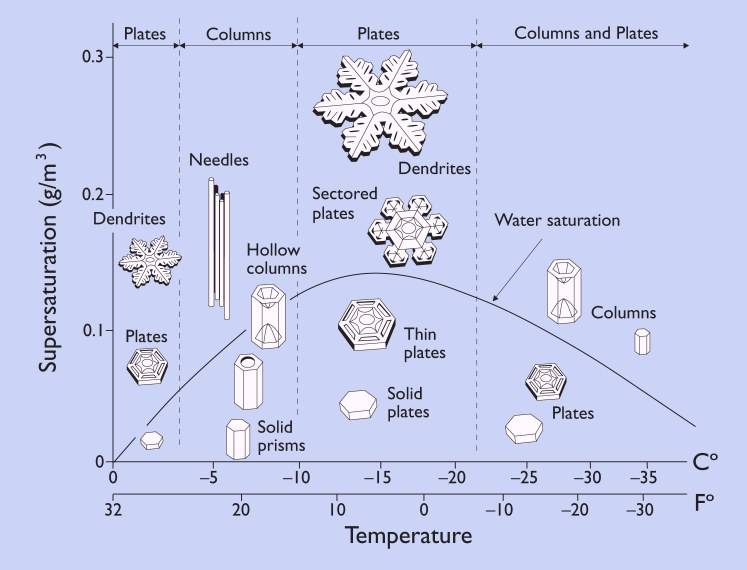Editor’s Note: This is a weekly column written by Meteorologist Joel Gratz that will take you “behind the scenes” of the typical weather forecast. Joel is the founder of ColoradoPowderForecast.com, where you can sign up for his email alerts.
Boulder, CO – No two snowflakes are the same, yadda yadda yadda. That’s fantastic and all, but my primary concern is not rooting through billions of snowflakes to find two that are alike. Instead, my primary concern is skiing light, fluffy, delightful powder. When I think about snow crystals, my primary objective is to find flakes that contribute to perfect powder skiing.
The weather pattern in the western U.S. over the last few days has been a perfect one to produce light, fluffy flakes. The best crystals for skiing powder are big, airy crystals because porous snow makes skiing feel effortless when you can just cut right through the deepness.
Big, airy crystals are called dendrites, and the biggest, lightest dendrites form in very high humidity and at temperatures between about 0-10ºF. We’ve had these cold temperatures from California to Montana to Utah over the last day or two, and the cold air is moving to Colorado for the last day of 2010.
While it doesn’t necessarily get too cold to snow in the lower 48 states, temperatures at mountain top level that are below about 0ºF actually produce snow crystals that are a bit smaller and not quite as light and fun to ski. Well, they’re probably still fun to ski, but now I’m just being a bit snobbish.
See the chart below for the ideal temperature for dendrites, and what types of crystals form at other temperatures.

